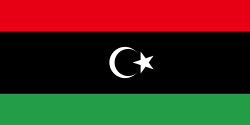20th Century
Since the 19th century, Italy had had colonial ambitions in Libya. [8] In 1912, the European power invaded and annexed Tripolitania and Cyrenaica right after their recognition by the Turks through the Treaty of Lausanne. [1] The power was shared between the Senussi orders and the Italian authorities in Libya. After the Senussi orders had sided with the Ottoman Empire during the war and lost, Muhammad Idris took the lead in the negotiations with the British. [1] In 1922, the different nationalist groups in Tripoli decided to put their differences aside and recognized Idris as the legitimate leader of Libya. [1] With his nomination, the war between the Senussi orders and the Italians started again. [1] After another Italian victory, thousands of Italians immigrated to the Libyan soil. [1] During World War II, Idris fled to Egypt where he was protected by the British. He finally rose to the throne when Libya was unified under a constitutional monarchy after the defeat of Italy and Germany. [1]
King Muhammad Idris was overthrown in the 1969 coup led by Captain Muammar Gaddafi. [2] Inspired by Nasser in Egypt, Gaddafi joined his project of regional unity, also called pan-Arabism, aiming at creating a common Arab state. [9] In this project, Gaddafi viewed Islam as an essential pillar, hence approaching ideas of pan-Islamism. Islam worked as a unifying factor of universal relevance. [10] Gaddafi wished to promote an alternative to the communism and capitalist philosophies in the Third International Theory. [11] This theory, developed in The Green Book, was addressing not only the Arab world but the entire globe and promoted direct democracy through the General People's Committee establishing a direct dialogue between the population and the government. [2]
